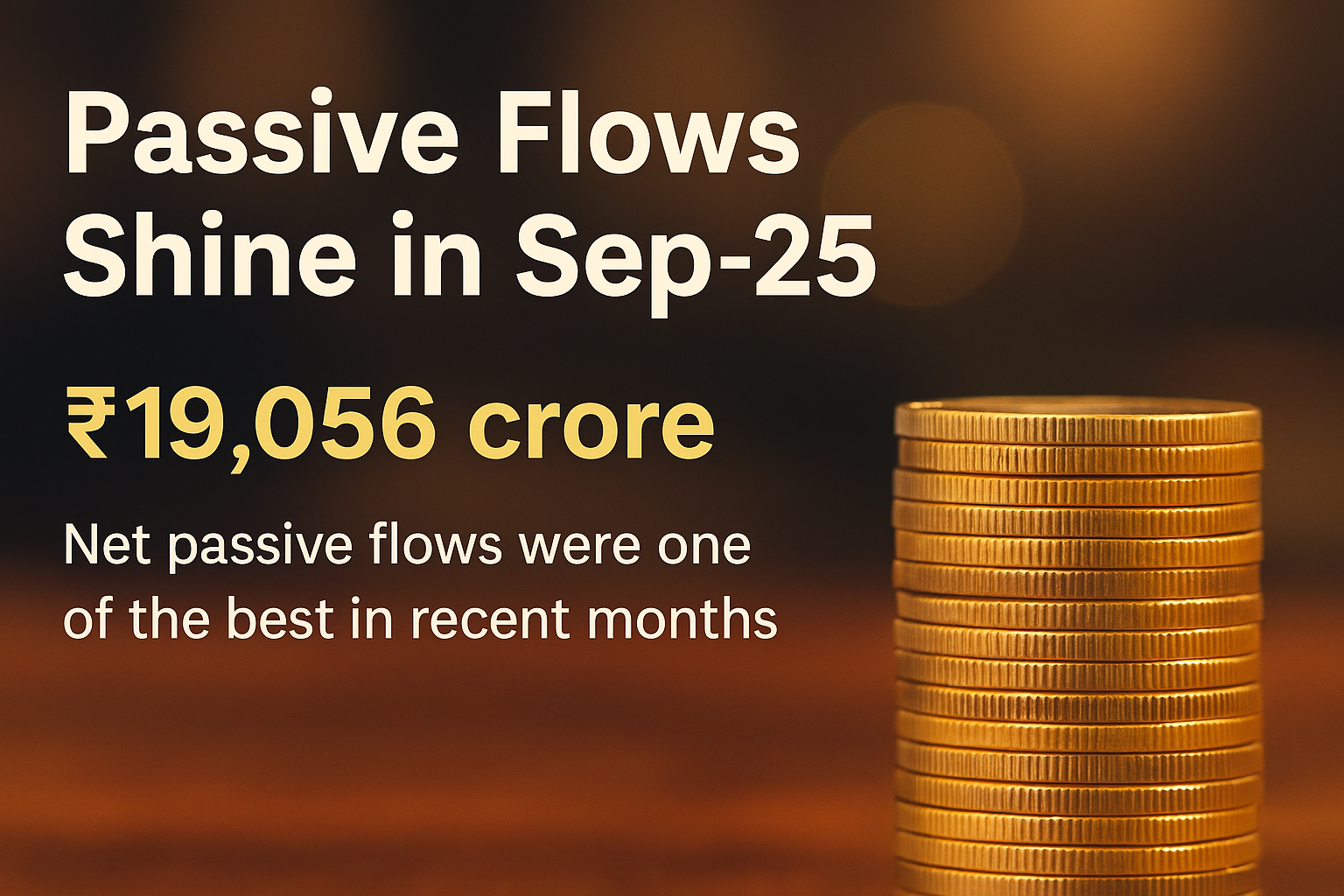Announcement: Lorem ipsum dolor sit amet, consectetur adipiscing elit. Donec et quam blandit odio sodales pharetra.
India’s Passive Investment Trend: Is the Sep-25 Surge for Real?
Passive flows jumped to a strong ₹19,056 crore in Sep-25 — but nearly ₹14,000 crore came from gold and silver ETFs driven by momentum, not true passive adoption. Is India really returning to the passive wave, or is this just a precious-metal frenzy? Here's the deeper analysis.

Table of Content
Passive flows shine in Sep-25
At ₹19,056 crore, the net passive flows were one of the best in recent months. In fact, for September 2025, the passive flows were next best after active equity flows at over ₹30,000 crore. For the month of September, hybrid flows were extremely tepid. Under these conditions, it does raise a question; as to whether this reflects another shift back towards the passive story in India? Passive funds saw smart flows after 2020, but slowed down sharply in the last couple of years.
Not so passive after all!
However, if you look at the granular break-up of the passive flows in Sep-25, an interesting trend comes out. Out of the ₹19,056 crore of passive flows in the month, more than ₹14,000 crore has gone into gold ETFs and silver ETFs. Now there is the catch. In India, most of the investors do not look at the gold and silver ETFs as a portfolio hedge or even as a passive participation in a precious metal. Instead, they look at it as active participation in the fortunes of an asset class. With gold at $4,000/oz and silver at $50, it looked more like a momentum buying surge in the precious metals. Can this momentum sustain forward?
Passive supply is still scarce
One of the keys to a big passive story is the combination of two factors. There must be a strong narrative and there must also be adequate supply. For now, both these are lacking. The supply of passive funds did pick up with the entry of Jio Blackrock, but it still has a long way to go. In the US, the passive thrust was led by Vanguard, Blackrock, and a host of other specialized players. That is still missing in India. Secondly, Warren Buffett once said in his 2016 note to the shareholders of Berkshire that Bogle had saved common Americans trillions of dollars through passive funds. That is the sort of strong narrative lacking here.
Is there adequate demand?
That is still the million-dollar question. As of now, the passive demand is still being led by corporates and institutions. HNIs are starting to take an interest, but the big retail participation is still not too evident in passive funds. Unless that happens, it will be tough for passive funds to really take-off as a concept. It needs a much sharper appreciation of benefits of passive funds among the investors as well as a greater willingness among the intermediaries, brokers, and financial advisors to sell passives as a distinct asset class. For now, the big bet is that as financial planning takes off as the basis for investment decisions, the demand for passive funds will pick up. Till then, it is like Waiting for Godot!
Comments